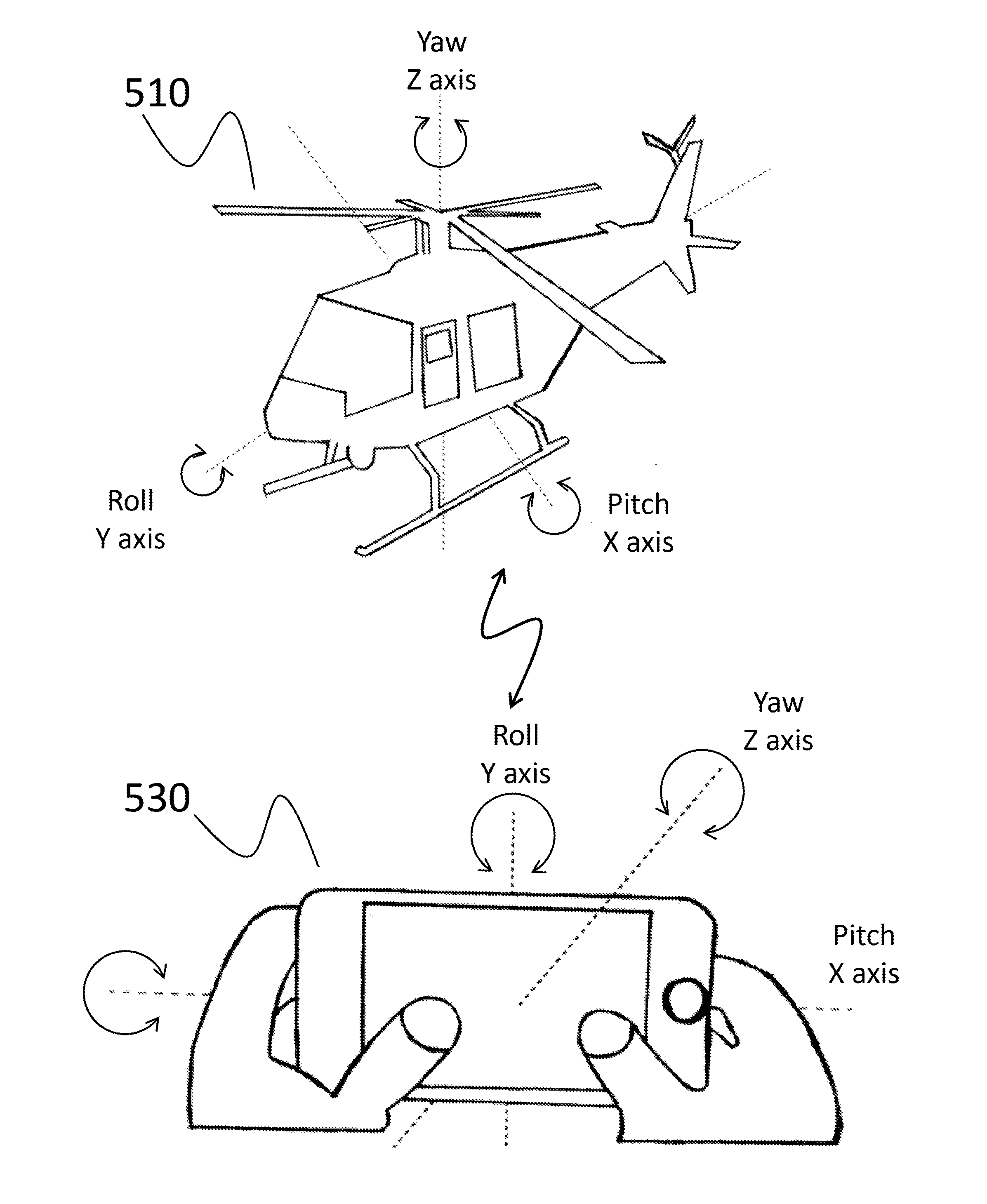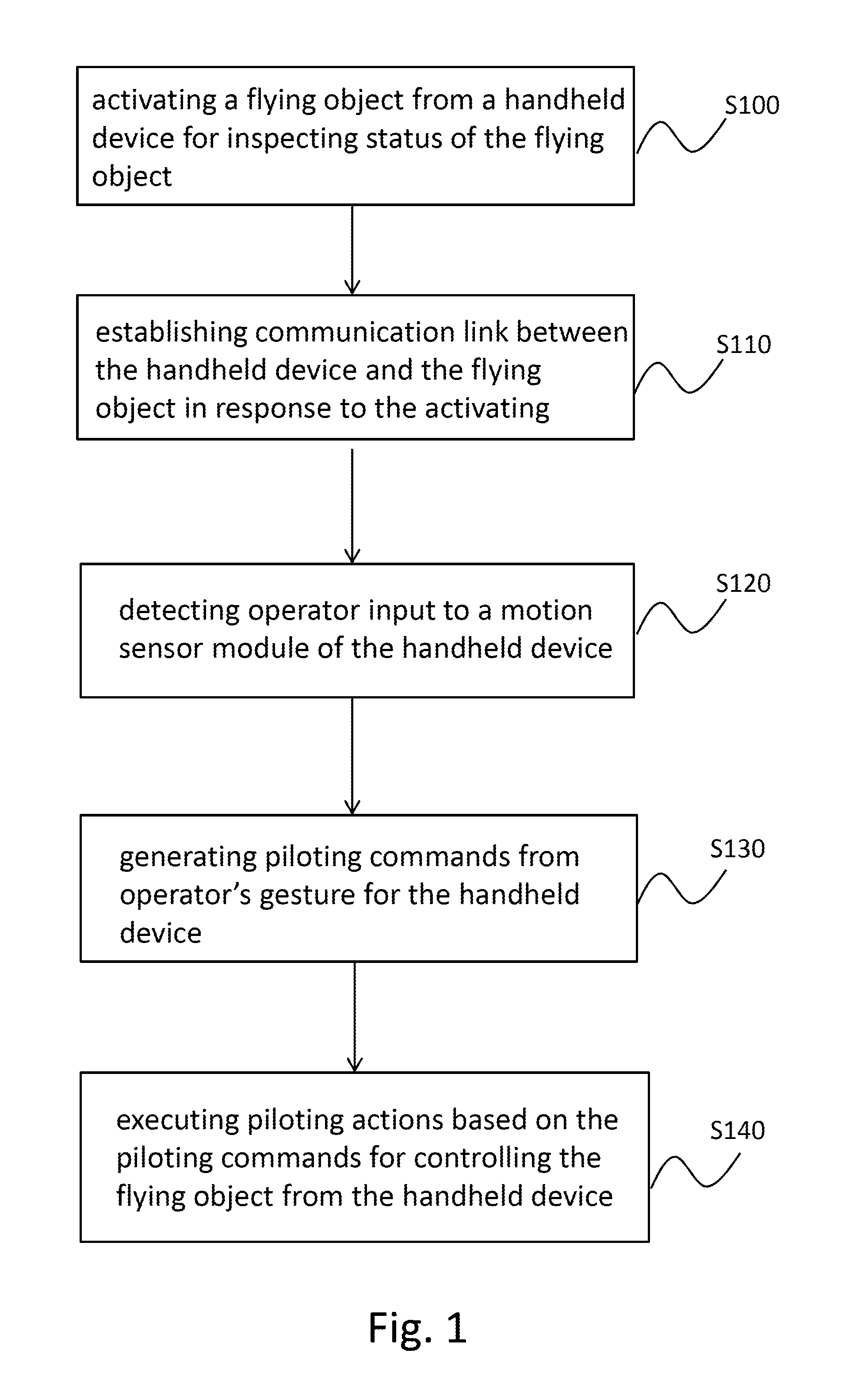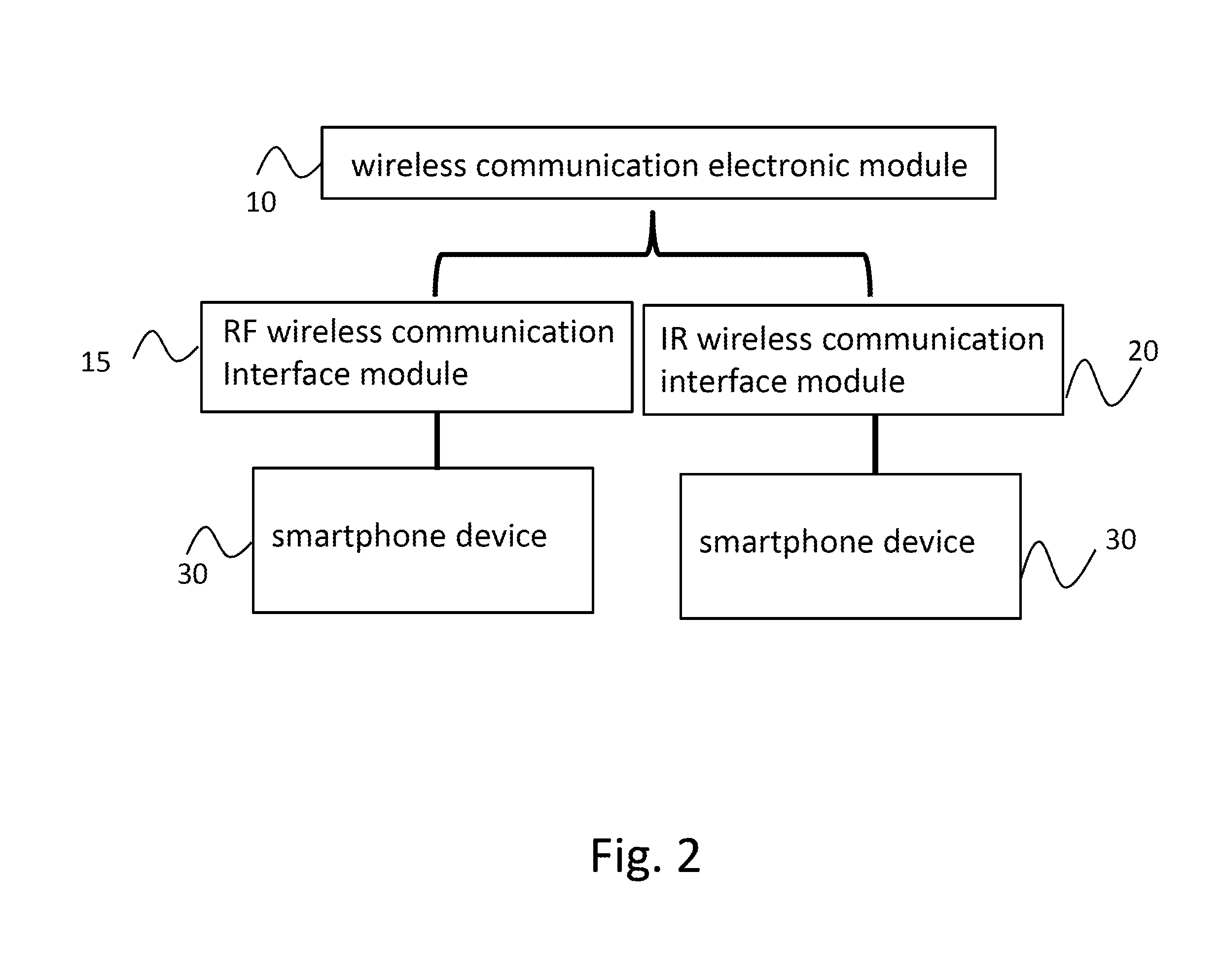Using handheld device to control flying object
a handheld device and flying object technology, applied in the field of rc toys, can solve the problems of not being able to reproduce the same roll action control motion through the same type, and the ar.drone and the rc plane cannot reproduce the same type of yaw action, so as to make it much more difficult for users to learn how to properly use the remote control radio
- Summary
- Abstract
- Description
- Claims
- Application Information
AI Technical Summary
Benefits of technology
Problems solved by technology
Method used
Image
Examples
second embodiment
[0044]Referring to FIG. 3A, it is a block diagram of a remote-controlled flying object system 500 with a motion sensor module 540 that includes a gyro-sensor 600 and a g-sensor 605. The gyro-sensor 600 of the motion sensor module 540 comprises at least one axis (shown in FIG. 4), and the g-sensor 605 of the motion sensor module 540 comprises at least two axes. The motion sensor module 540 is provided to measure motion signals when the handheld device is operated at three-dimensional movements. The motion signals can be output parameters representative of one or more motion data in acceleration and angular speed, so as to calculate orientation values, gravity changes and linear accelerations of the flying object.
third embodiment
[0045]Referring to FIG. 3B, it is a block diagram of a remote-controlled flying object system 500 with a motion sensor module 540 that includes a gyro-sensor 600, a g-sensor 605 and a magnetic sensor 720. The gyro-sensor 600 of the motion sensor module 540 comprises at least one axis (shown in FIG. 4), the g-sensor 605 of the motion sensor module 540 comprises at least two axes, and the magnetic sensor 720 comprises three axes. The motion sensor module 540 is provided to measure motion signals when the handheld device in the form of a smartphone 530 is operated at three-dimensional movements. The motion signals can be output parameters representative of one or more motion data in acceleration, angular speed and magnetic flux, so as to calculate orientation values, gravity changes and linear accelerations of the flying object.
[0046]In the second and third embodiments, the flying object 510 is a remote control helicopter aircraft or jet aircraft. The flying object 510 is flown to a de...
fourth embodiment
[0060]A remote-controlled flying object system for using a handheld device is disclosed herein (not shown) according to the present invention. The remote-controlled flying object system comprises a flying object, and a wireless communication unit. The flying object is attached with a g-sensor for detecting an acceleration of a gravity direction of the flying object based on one or more measurements of the acceleration so as to prevent flying crash. The wireless communication unit establishes a wireless communication link between the handheld device and the flying object via a plurality of infrared or radio-frequency signals. The handheld device further comprises a touch screen, a motion sensor module, a flight control and piloting interface and a flight control software program. The motion sensor module has a gyro-sensor and a g-sensor for measuring roll, yaw and pitch angles, and translation of the handheld device. The flight control and piloting interface is provided to display on...
PUM
 Login to View More
Login to View More Abstract
Description
Claims
Application Information
 Login to View More
Login to View More - R&D
- Intellectual Property
- Life Sciences
- Materials
- Tech Scout
- Unparalleled Data Quality
- Higher Quality Content
- 60% Fewer Hallucinations
Browse by: Latest US Patents, China's latest patents, Technical Efficacy Thesaurus, Application Domain, Technology Topic, Popular Technical Reports.
© 2025 PatSnap. All rights reserved.Legal|Privacy policy|Modern Slavery Act Transparency Statement|Sitemap|About US| Contact US: help@patsnap.com



